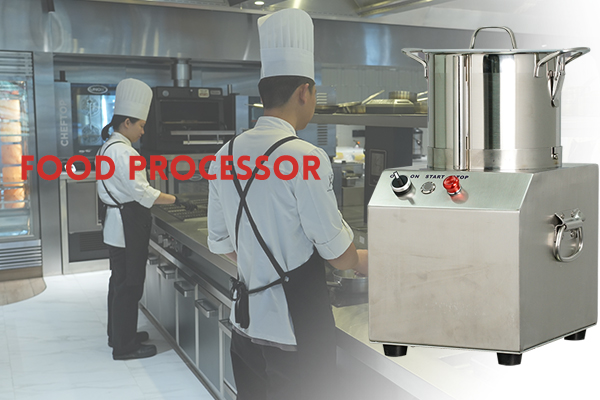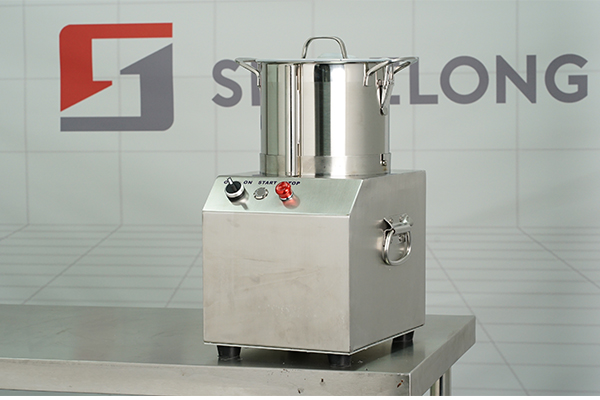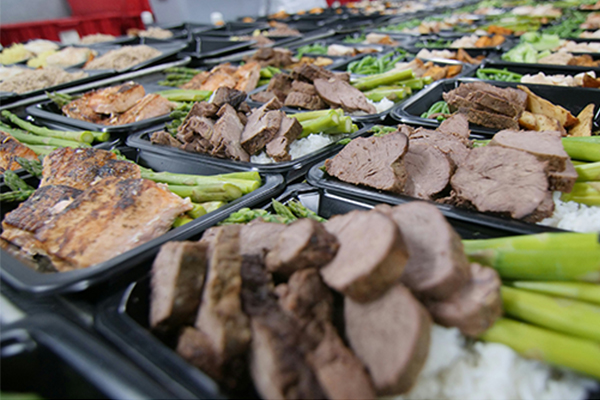As the all-star multitasker designed for high-volume tasks, a commercial food processor stands out with its powerful motor (typically over 800W), enabling it to operate at full speed for 4 - 8 hours continuously. This contrasts with home models, which can't match its endurance.
7 Benefits of Using a Professional Food Processor in a Commercial Kitchen
What Defines a Commercial Food Processor?

As the all-star multitasker designed for high-volume tasks, a commercial food processor stands out with its powerful motor (typically over 800W), enabling it to operate at full speed for 4 - 8 hours continuously. This contrasts with home models, which can't match its endurance. The 8 - 20-liter work bowl of a commercial food processor handles three to five times the capacity of a home unit in one go, making it ideal for large-scale food preparation tasks that are common in commercial settings.
Constructed from 304 stainless steel or food-grade engineering plastic, commercial food processors are built to last. Their materials not only ensure durability but also meet HACCP standards for hygiene and safety. The heavy-duty design provides industrial-strength protection, which is essential in high-volume kitchens where efficiency and reliability are paramount.
One of the most valuable aspects of a commercial food processor is its modular design, which allows for quick changes among over 20 attachments. With attachments ranging from vegetable slicing discs and dough hooks to emulsifying blades, it offers the versatility needed to handle a wide array of food preparation tasks. This adaptability makes it an essential tool for various food service establishments, including hotels, central kitchens, and fast-food chains. These businesses can achieve standardized, batch-oriented production with ease, ensuring consistency and quality across different recipes and menu items.
7 Clear Advantages for Commercial Kitchen Operations

1. Industrial-Grade Efficiency
Shinelong food processing equipment exemplifies how high-duty processors revolutionize prep work. Its 1,200 RPM blade system shreds 15 lbs of cabbage in 90 seconds—a task requiring 25 minutes manually. Continuous feed chutes let staff add ingredients mid-operation, slashing downtime during rush hours. For bakeries, this means whipping 10 L of meringue in one batch while simultaneously kneading dough.
2. Precision Engineering for Consistency
Michelin-starred kitchens rely on devices like our vegetable cutter for millimeter-perfect cuts. Adjustable blades (0.2-8mm thickness) ensure carrot coins in a chain restaurant measure identically across 500 locations. Digital timers sync with blade speeds, guaranteeing uniform texture whether processing tender herbs or frozen meat blocks.
3. Cost-Effective Space Optimization
A single commercial kitchen equipment unit replaces six appliances: mandoline slicers, grinders, mixers, and more. The shinelong food processing equipment demonstrates this versatility—its emulsifying disc creates silken hollandaise while the grating kit produces 40 lbs of cheese per hour. This consolidation reduces equipment costs by 60% and storage needs by 75%, as documented in NRA's 2023 kitchen space utilization study.
4. Enhanced Food Safety Protocols
Commercial models integrate failsafe mechanisms absent in consumer-grade devices. For example, Shinelong's meat slicer features triple-lock safety interlocks that halt operation if the meat is misaligned, while antimicrobial blade coatings inhibit bacterial growth. NSF-certified models reduce cross-contamination risks through seamless, crevice-free designs.
5. Labor Cost Reduction
According to NAFEM's analysis, a commercial food processor handling 200 lbs of daily prep cuts labor hours by 4.5 per shift. Actually, our commercial appliance achieves this through automated batch processing—its 20L bowl preps salad bases for 300 covers without manual intervention, allowing staff to focus on plating and quality control.
6. Energy Efficiency at Scale
High-duty motors in commercial-grade food processors deliver superior energy efficiency compared to multiple smaller appliances working in tandem. Lab tests demonstrate that a 1,500W industrial model consumes only 0.4 kWh to process 100 pounds of vegetables, while three conventional 500W household units require 1.8 kWh for the same task. This stark difference in energy consumption translates to annual savings exceeding $2,500 for an average restaurant, highlighting how commercial kitchen equipment optimizes power usage through robust engineering and streamlined workflows. By consolidating tasks into a single high-performance system, kitchens reduce both electricity waste and operational costs without compromising output quality.
7. Adaptability Across Cuisines
From sushi bars to steakhouses, these processors solve niche challenges. Some processing machine creates paper-thin beef slices for shabu-shabu using their -4°C chilled blade system, while pulsing salsas without crushing delicate herbs. Food trucks particularly benefit from a compact food processor, which processes 8 lbs of taco fillings per minute using 30% less counter space.
Conclusion
Investing in a professional food processor isn't just about speed—it's about building a resilient commercial kitchen infrastructure. As ingredient costs and labor shortages intensify, these machines provide the precision, scalability, and compliance modern food businesses demand. Whether perfecting a signature sauce or standardizing global menus, they're the invisible force driving profitability in today's competitive culinary landscape.

- What is a food processor?A food processor is an electric kitchen appliance with interchangeable blades revolving inside a container to chop, slice, shred, mince, purée, or otherwise process food quickly.
- What is the use of a commercial food processor?A commercial food processor streamlines high‑volume kitchen tasks—such as slicing, dicing, shredding, pureeing, and mixing—to save labor and ensure uniform results in hotels, central kitchens, and fast‑food chains.
- What are the advantages of using a food processor?Food processors save time by automating repetitive prep tasks, delivering consistent texture across batches, and handling a wide range of functions—from shredding and slicing to kneading—thanks to versatile attachments.
- Why is a food processor better than a blender in a commercial kitchen?Unlike blenders geared toward liquids, food processors excel with solid ingredients—chopping, slicing, and kneading dough, making them more versatile for batch prep and thicker consistencies.
- Are you manufacturer?Yes,we are half manufacturer half trading company. Manufacturing Furnotel brand equipment, trading for all kinds of kitchen equipment,especially turn-key solution.
- Is it worth having a food processor?For cooks who frequently prepare sauces, nut butters, doughs, or large quantities of ingredients, a food processor is a worthwhile investment, offering durable, multifaceted performance that outpaces manual prep.

Since Shinelong was established in Guangzhou in 2008, we have made great strides in the fields of commercial kitchen planning and kitchen equipment manufacturing.
IF YOU HAVE ANY QUESTION,PLEASE CONTACT US.
WhatsApp: +8618902337180
WeChat: +8618924185248
Telephone: +8618924185248
Fax: +86 20 34709972
Email: info@chinashinelong.com
After-Sales Contact
Telephone: +8618998818517
Email: service@chinashinelong.com
Add: No. 1 Headquarters Center, Tian An Hi-tech Ecological Park, Panyu Avenue, Guangzhou, China.


















